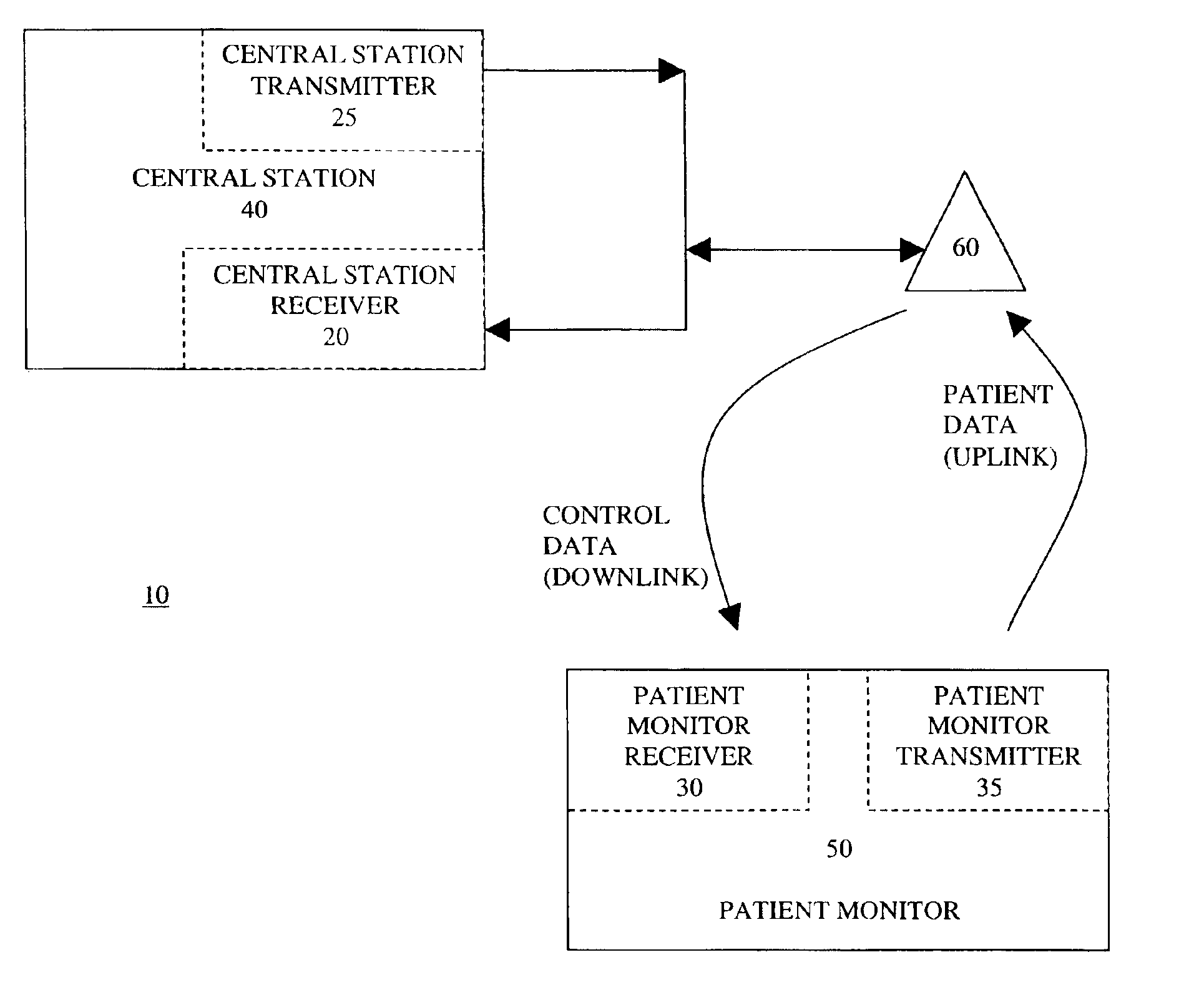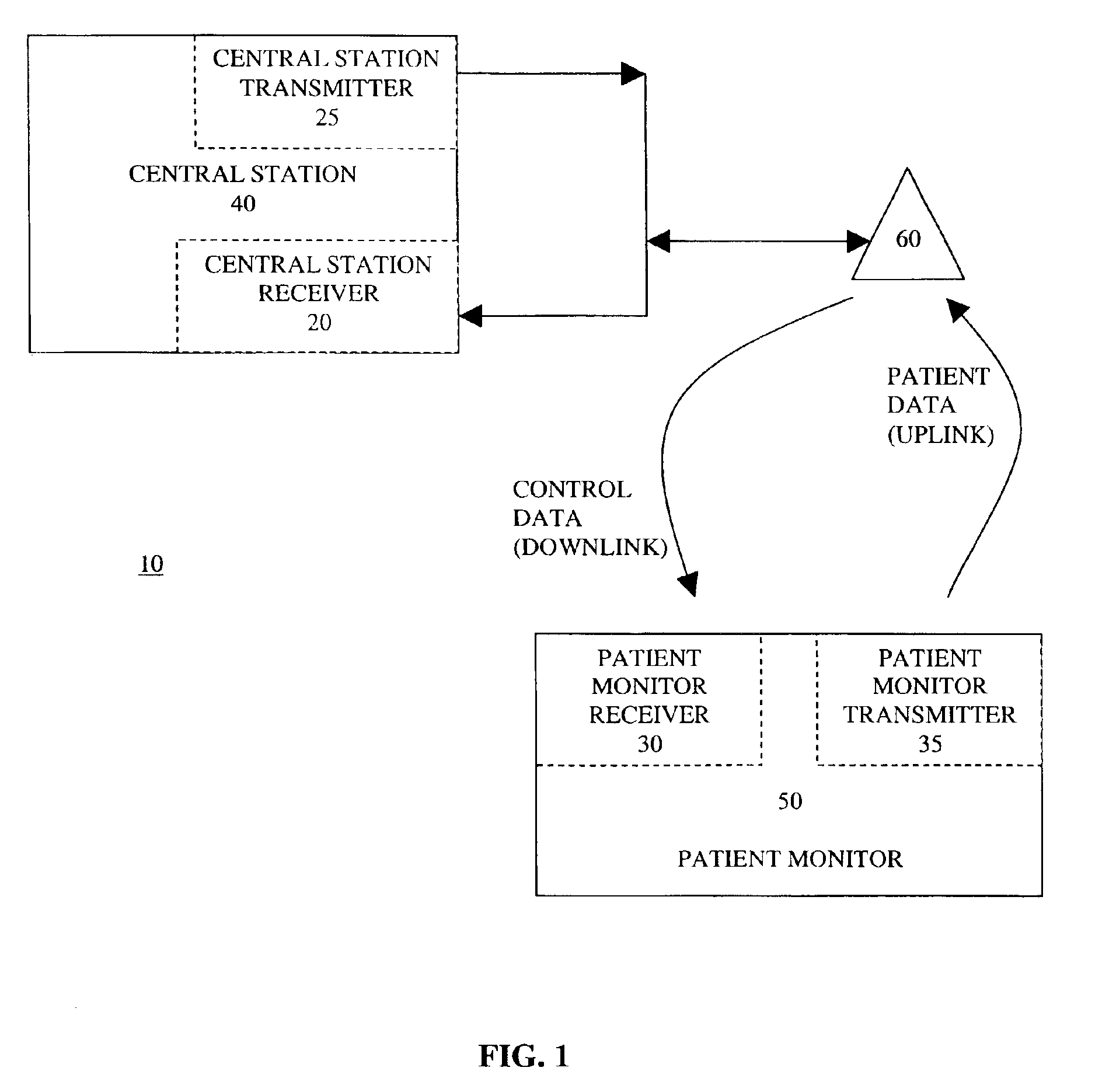System and method for a low rate, in-band broadcast communication for medical telemetry
a low-rate, in-band broadcast communication technology, applied in the field of medical telemetry system, can solve the problems of limiting the number of channels within the 6 mhz bandwidth that are available, and affecting the quality of medical car
- Summary
- Abstract
- Description
- Claims
- Application Information
AI Technical Summary
Problems solved by technology
Method used
Image
Examples
Embodiment Construction
[0018]In one embodiment as shown in FIG. 1, a medical telemetry system 10 includes a central station 40 that is wirelessly connected to a patient monitor 50 via an antenna node 60. The central station 40 comprises a central station transmitter 25 connected to the antenna node 60 for transmitting control data and / or control messages to the patient monitor 50 (downlink transmission). The central station 40 also comprises a central station receiver 25 connected to the antenna node that receives patient data from the patient monitor 50 (uplink transmission). The patient monitor 50 comprises a patient monitor transmitter 35 that transmits patient data to the central station receiver 20 of the central station 40. The patient monitor 50 also comprises a patient monitor receiver 30 that receives control data from the central station transmitter 25.
[0019]In operation, the patient monitor transmitter 35 operates on a predetermined frequency bandwidth that is composed of a plurality of frequen...
PUM
 Login to View More
Login to View More Abstract
Description
Claims
Application Information
 Login to View More
Login to View More - R&D
- Intellectual Property
- Life Sciences
- Materials
- Tech Scout
- Unparalleled Data Quality
- Higher Quality Content
- 60% Fewer Hallucinations
Browse by: Latest US Patents, China's latest patents, Technical Efficacy Thesaurus, Application Domain, Technology Topic, Popular Technical Reports.
© 2025 PatSnap. All rights reserved.Legal|Privacy policy|Modern Slavery Act Transparency Statement|Sitemap|About US| Contact US: help@patsnap.com



